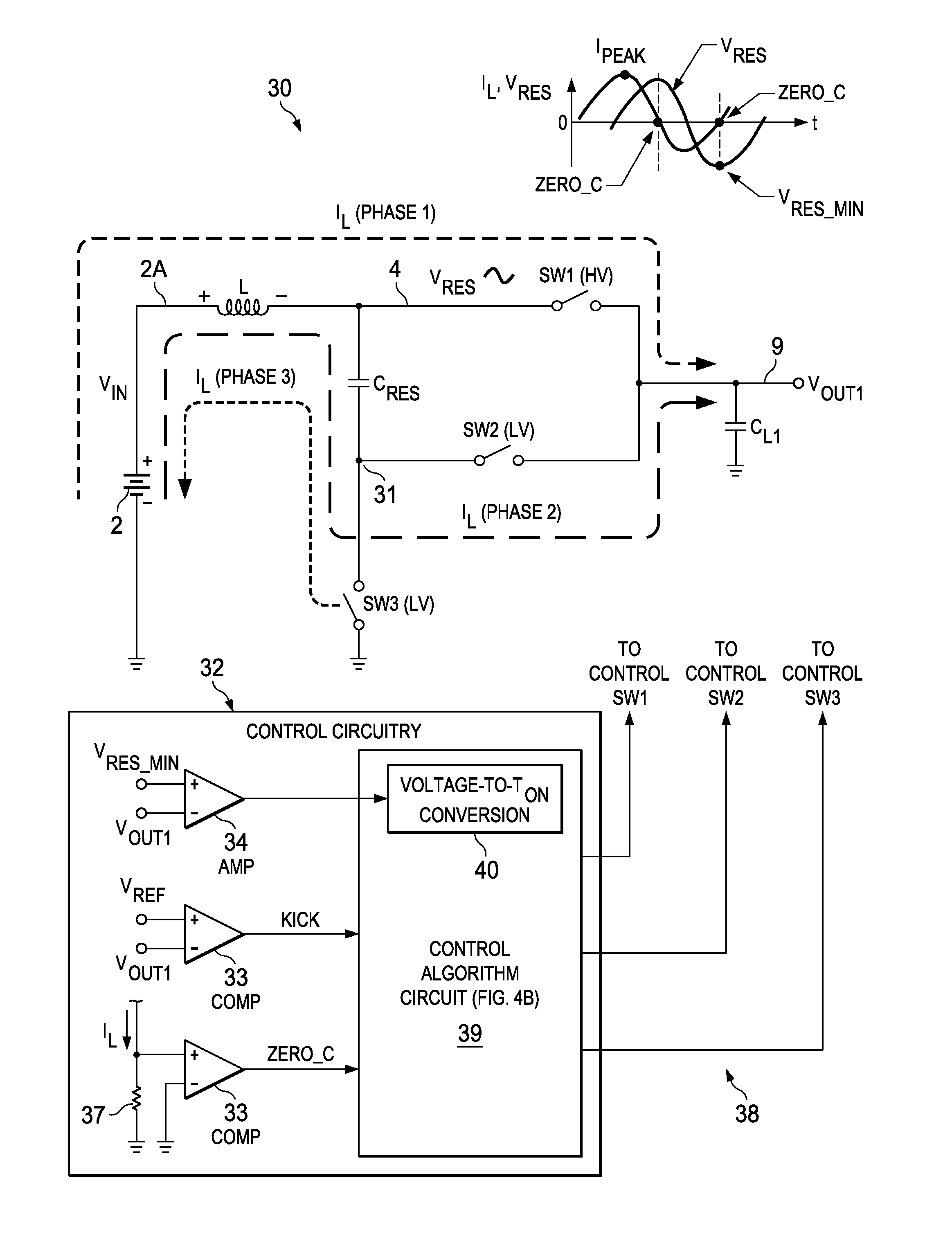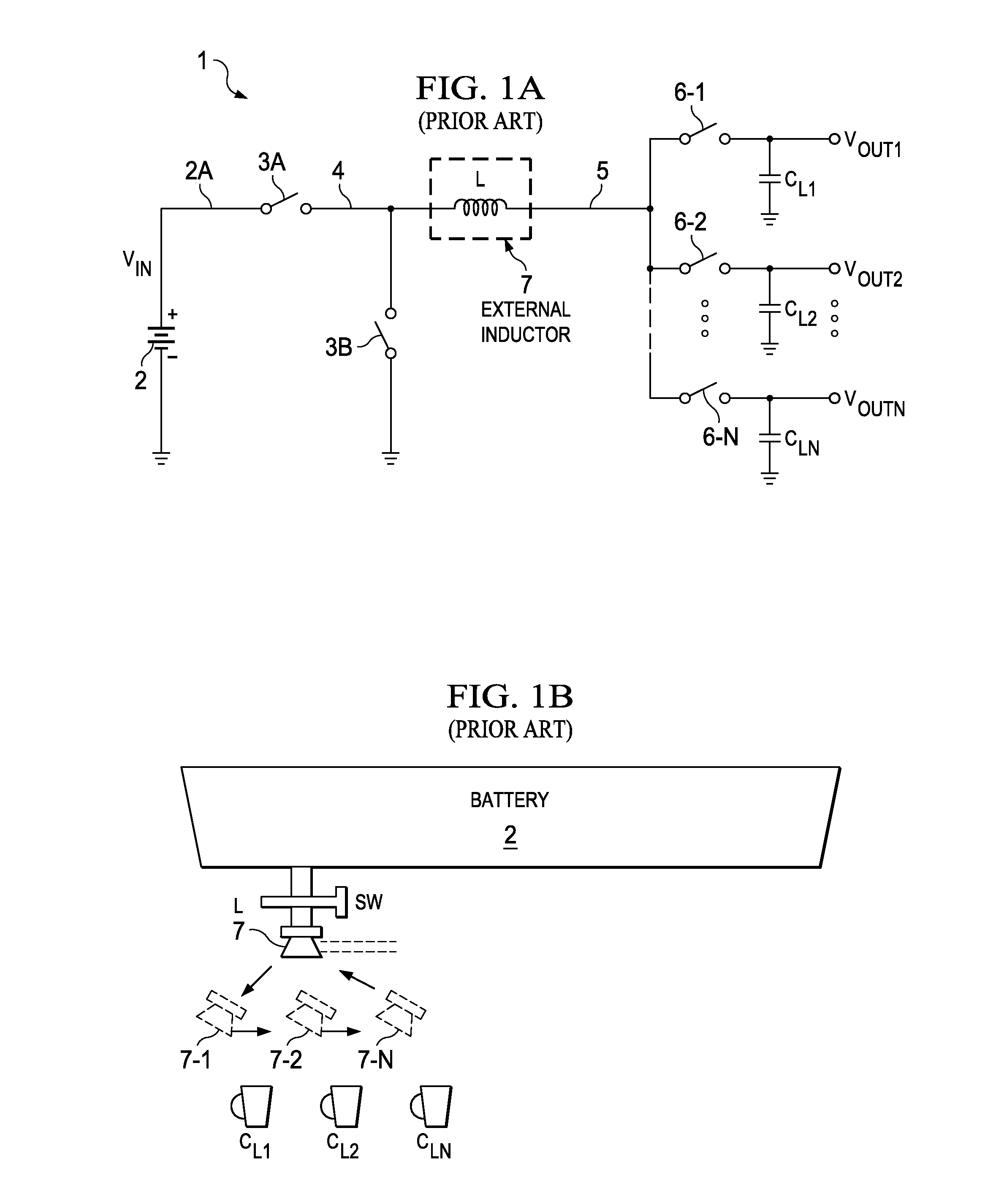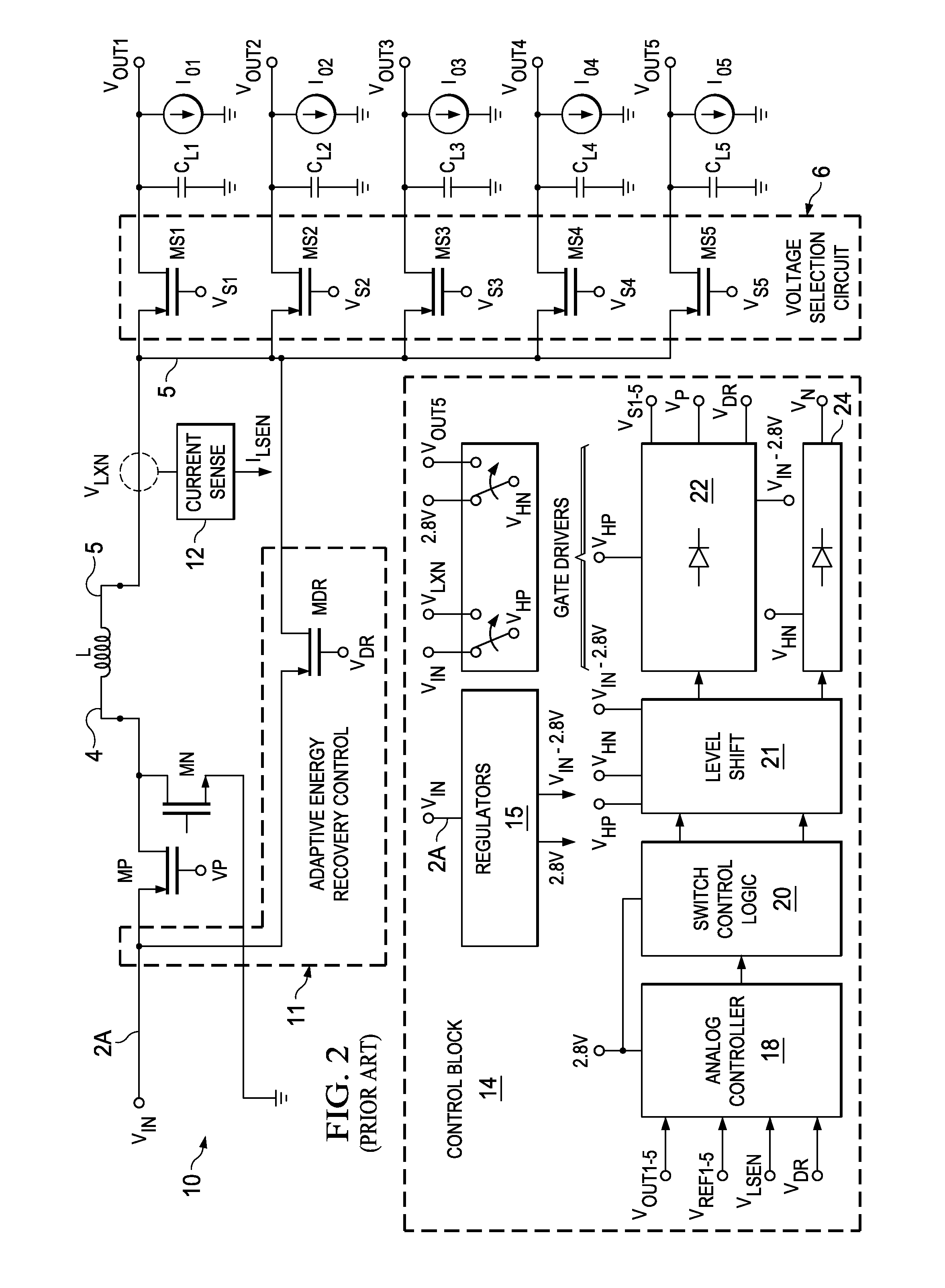Resonance-based single inductor output-driven dc-dc converter and method
a dc-dc converter and output technology, applied in the field of dc-dc converters, can solve the problems of high cost of external inductors required for each dc-dc voltage converter, inability to add a large number of dc-dc converters to provide different power supply voltages in various parts of the chip, and the simo dc-dc converters presently available, etc., to achieve the effect of reducing system cost, reducing system power efficiency
- Summary
- Abstract
- Description
- Claims
- Application Information
AI Technical Summary
Benefits of technology
Problems solved by technology
Method used
Image
Examples
Embodiment Construction
[0073]An optimum DC-DC converter topology preferably has “soft switching”, i.e., ZVS (zero voltage switching) and ZCS (zero current switching) wherein switching of a typical MOS switch transistor therein is performed only when both the source and drain terminals are at essentially the same voltage. However, most DC-DC converters include at least one “non-ZVS” switching transistor, which typically is the “high side” input switch transistor. (A “high side” input switch is connected to the positive supply voltage and a “low side” input switch is connected to ground.) An input switch transistor supplies current to the external inductor of a typical DC-DC converter. One reason that ZVS switching is not commonly used in DC-DC converters is that most of them do not use “resonant techniques” such as those mentioned previously. (In a resonant DC-DC converter, the current flow through inductor L is bidirectional, rather than unidirectional as in non-resonant DC-DC converters. The operating mo...
PUM
 Login to View More
Login to View More Abstract
Description
Claims
Application Information
 Login to View More
Login to View More - R&D
- Intellectual Property
- Life Sciences
- Materials
- Tech Scout
- Unparalleled Data Quality
- Higher Quality Content
- 60% Fewer Hallucinations
Browse by: Latest US Patents, China's latest patents, Technical Efficacy Thesaurus, Application Domain, Technology Topic, Popular Technical Reports.
© 2025 PatSnap. All rights reserved.Legal|Privacy policy|Modern Slavery Act Transparency Statement|Sitemap|About US| Contact US: help@patsnap.com



